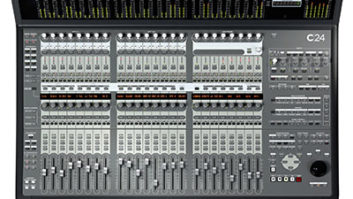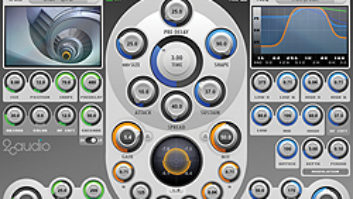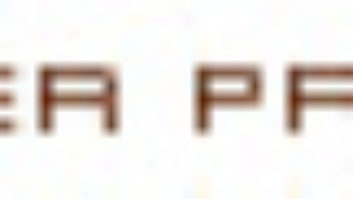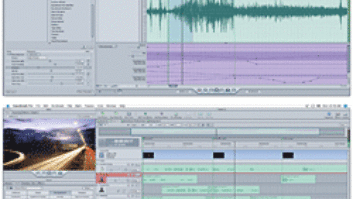The restoration engineer’s idea of heaven is being provided with a collector’s choice of record pressings and tapes, or, better yet, poring through a vault to find a lost treasure. But when handed a one-off acetate disc or cassette tape to salvage, the restoration engineer’s process often shifts toward forensics, where improving intelligibility is a more realistic goal than traveling through time to recover nuance.
IT’S ARCHEOLOGICAL, DIG?
While this article’s focus is on technique, the extent to which tools are required is determined by budget and the amount of work to be done. Of course, Sonic Solutions’ NoNoise comes to mind, as do CEDAR’s Series X products, which I had the good fortune of reviewing a few years ago.
Knowing what CEDAR can do at $6k per box, I wanted to know what was possible at the other end of the spectrum. Cool Edit Pro is a product that I frequently use to manipulate audio files. At $249, it is quite the bargain as a multitrack recorder/editor, and includes an assortment of plug-ins, some restoration-specific. I’ve also been playing with a beta version of DART Pro XP. At $399, it’s a bit more expensive than Cool Edit and is 2-track, but does focus exclusively on restoration.
It’s important to start with the best possible source material. I have chosen some rather extreme examples — 78 rpm records and a microcassette — to show how to prepare the material so that any soft- or hardware solution can do a better job.
The graphic in Fig. 1 originally began life detailing only the relationship of a 1-mil stylus to a “micro- groove” record, the standard for mono LPs and 45 rpm discs from 1949 until the intro of stereo and color TV in 1957. The image was then augmented to show three styli, sitting in the groove from front to rear, where each stylus is designated by its radius at the point of contact. From the bottom up: yellow (.7 mil, stereo), pink (1 mil, mono LP and 45 rpm) and blue (2.7 mil, 78 rpm). At that time, the only stylus shape option was conical (round). Later, elliptical and other shapes improved high-frequency tracking, lowered distortion and reduced groove wear.
SURFING FOR TIPS
Typically, Stanton phono cartridges have the most stylus options (available at www.kabusa.com and www.needledoctor.com). Shure (www.shure.com) has one stylus for 78 rpm playback. In the pre-DSP days, I chose a smaller stylus to play deeper into the groove away from the major ticks and pops on the surface. The official tip radius is 3 mil, but the actual size for best performance is determined by the disc’s material, condition and time period.
High note: Ticks and pops are primarily surface flaws, which require a noise-removal technique that responds to impulse. For this article, surface noise is defined as being generated from the material used to press the disc.
After 1949, many 78s were pressed from Vinylite and cut with the same stylus used for LPs and 45s but with a deeper groove. For these discs, a smaller tip radius yields better HF response, fewer ticks and pops and less distortion by playing the groove in an area that is undamaged by previous and repeated play.
Pre-1949 records were made from shellac, a grainy substance before wear is factored in. While smaller and/or elliptical styli can better trace the groove at high frequencies, the enhanced resolution also reveals flaws in that disc compound. The optimum stylus choice is one that allows the decrackling algorithm the most leeway. If too small, the wash of noise will leave little wiggle room for the DSP.
Low note: If the bottom-of-groove radius is larger than the tip radius, the stylus will not be supported by the groove walls. The stylus will meander in the gutter and generate a “swishy” sound.
Figure 2 shows the record equalization curve that was specified by RCA in 1951 for LP and 45 rpm records. An inverse curve is used for playback, which was provided on a 45 rpm test record’s cover. When played with a 1-mil mono stylus, the HF response drops steeply after 7kHz; when played with a modern “stereo” stylus, the response at 15kHz is only down 2 dB. Visit www.tangible-technology.com for more images and audio samples.
EEK-U
The final issue concerns equalization. Prior to the introduction of the LP and 45, record manufacturers used EQ to optimize the disc to their standards. The response curve in Fig. 2 dates back to 1951 when RCA referred to it as the “New Orthophonic Recording Characteristics.” It is essentially the RIAA curve: A treble boost and bass cut are applied during record, and then a reciprocal curve on playback reduces noise and improves tracking, respectively. Any 78 rpm records should be played flat, thus requiring a preamp with that capability. This is as important to the record’s sound because it is useful to the click-reduction algorithm, allowing transient ticks to be more easily identified. It is better to apply EQ after restoration is complete.
WHAT’S CRACKLIN’?
Removing ticks and pops is easy. How much further you go is a matter of taste, time, tools and money. If the disc condition and transfer are really good, CEDAR’s DeCrackler takes less than a minute to optimize. Decrackling is a more difficult task if “record grunge” is not so far above the program material. The RIAA curve increases low-frequency rumble that can modulate the noise-reduction process, a percolating or bubbling kind of sound that is similar to fluttering clarinets.
In terms of usable frequency response above 5kHz, “que sera sera.” A good pressing may reveal useful information that might otherwise be masked by surface noise. A funky pressing requires more patience and a larger selection of styli. Choose a tip radius that moves the noise spectrum outside of the usable response. That noise can either be tolerated, processed or filtered. I’m content when a pre-1949 78 rpm recording sounds like a noisy analog tape.
THE ULTIMATE TAPE HISS
Several years ago, I went to a Christmas party at Nola Studios, way up in the penthouse of the Steinway building on West 57th Street in New York City. Armed with a microcassette recorder, I captured stories from various Bell Sound alumni gathered there. Back in the ’60s, Bell Sound was one of the hot independent studios: Many of the Burt Bacharach/Dionne Warwick recordings were made there, as well as cuts by the Stones, the Lovin’ Spoonful and some Motown artists.
Alas, one interviewee, Harry “Hesh” Yarmark, is no longer with us. His first session as a recording engineer began with Little Anthony & The Imperials (“Tears on My Pillow”). Harry also record- ed Peter, Paul and Mary, the Four Seasons, Laura Nyro, Richie Havens, Paul Butterfield, the Five Stairsteps (“Ooh Child”) and The Toys (“A Lover’s Concerto”). After leaving Bell, his first session at Allegro Studios was with Johnny Maestro and The Brooklyn Bridge recording “Worst That Could Happen.”
So, Harry’s gone and all I’ve got is this microcassette. I never paid much attention to the format except that, as with all analog media, faster is better for high-frequency response. With the azimuth wandering all over the place and the electronics lacking headroom, this tape redefined the term “challenge.” I decided to wind the microcassette tape into a new full-sized cassette shell, hoping for better playback.
THERE’S A SNAKE IN MY EARS
As expected, the tape played backward with one surprise, at double speed. Turns out that “fast” for a microcassette is 15/16 ips! I made a quick half-speed modification to one of several “spare” cassette decks. While preparing for transfer, it was difficult to hear enough high-frequency detail to optimize the azimuth, so I applied an inverse EQ curve (Fig. 3) to improve intelligibility and reduce low- to mid-frequency muck. (This basically undid the normal bias EQ curve inherent to the machine.) Still, the azimuth required tweaking about every seven to 10 minutes as is the nature of the original beastly recording. The transfer was made to an Alesis MasterLink, samples of which were dumped into a workstation for reversal, analysis and noise tests.
The improved transport and electronics made a huge difference in the recovered signal. The EQ curve gave the De-Hiss algorithm plenty to work with. Afterward, a modified reciprocal curve restored the warmth that was removed during the transfer. I tried both Cool Edit Pro and DART Pro XP. CEP Version 2 — released earlier this year — did a remarkable job, especially after sampling the noise in a section that did not have dialog. DART Pro was still in beta when tested, which did not include the new noise-reduction algorithm.
RIDING THE RANGE
The beauty of dedicated hardware is real-time control and live on-the-fly tweaking. Two years later, the 78 rpm restoration still holds up. CEDAR really delivered the goods and made the job quick and easy. For the microcassette, software de-noising was not real time, although it was possible to audition before processing. I am amazed that such affordable tools like Cool Edit Pro and DART Pro can do so much for their price.
For more Ciletti, including “before and after” audio samples from the projects described here, visitwww.tangible-technology.com.





